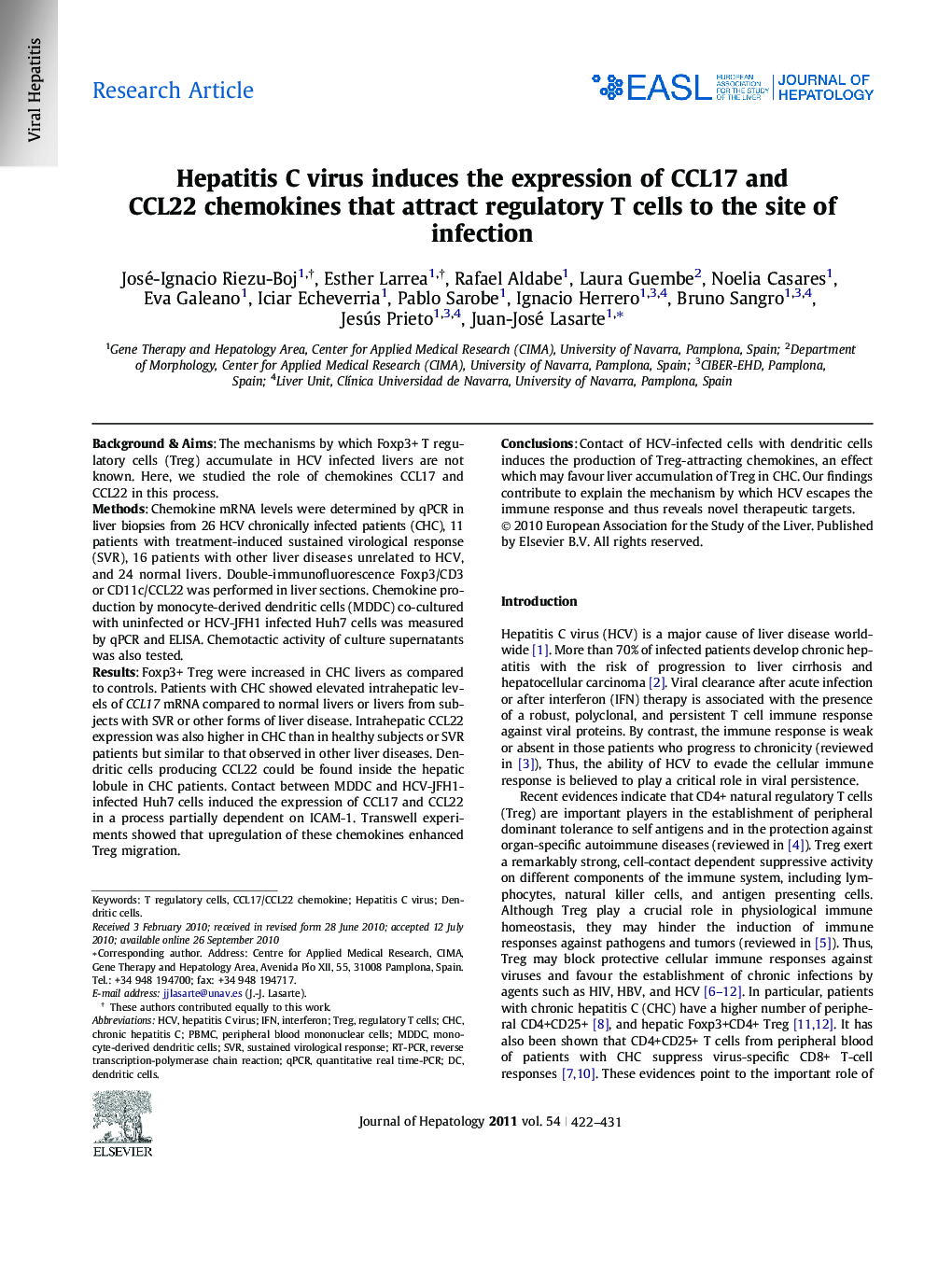| کد مقاله | کد نشریه | سال انتشار | مقاله انگلیسی | نسخه تمام متن |
|---|---|---|---|---|
| 6106875 | 1211167 | 2011 | 10 صفحه PDF | دانلود رایگان |

Background & AimsThe mechanisms by which Foxp3+ T regulatory cells (Treg) accumulate in HCV infected livers are not known. Here, we studied the role of chemokines CCL17 and CCL22 in this process.MethodsChemokine mRNA levels were determined by qPCR in liver biopsies from 26 HCV chronically infected patients (CHC), 11 patients with treatment-induced sustained virological response (SVR), 16 patients with other liver diseases unrelated to HCV, and 24 normal livers. Double-immunofluorescence Foxp3/CD3 or CD11c/CCL22 was performed in liver sections. Chemokine production by monocyte-derived dendritic cells (MDDC) co-cultured with uninfected or HCV-JFH1 infected Huh7 cells was measured by qPCR and ELISA. Chemotactic activity of culture supernatants was also tested.ResultsFoxp3+ Treg were increased in CHC livers as compared to controls. Patients with CHC showed elevated intrahepatic levels of CCL17 mRNA compared to normal livers or livers from subjects with SVR or other forms of liver disease. Intrahepatic CCL22 expression was also higher in CHC than in healthy subjects or SVR patients but similar to that observed in other liver diseases. Dendritic cells producing CCL22 could be found inside the hepatic lobule in CHC patients. Contact between MDDC and HCV-JFH1-infected Huh7 cells induced the expression of CCL17 and CCL22 in a process partially dependent on ICAM-1. Transwell experiments showed that upregulation of these chemokines enhanced Treg migration.ConclusionsContact of HCV-infected cells with dendritic cells induces the production of Treg-attracting chemokines, an effect which may favour liver accumulation of Treg in CHC. Our findings contribute to explain the mechanism by which HCV escapes the immune response and thus reveals novel therapeutic targets.
Journal: Journal of Hepatology - Volume 54, Issue 3, March 2011, Pages 422-431